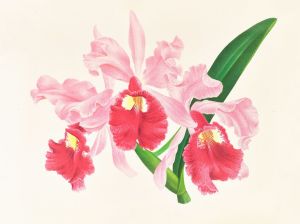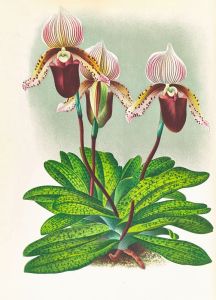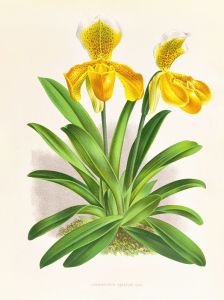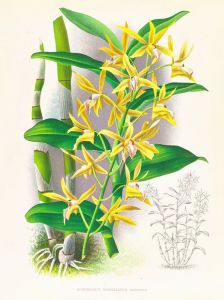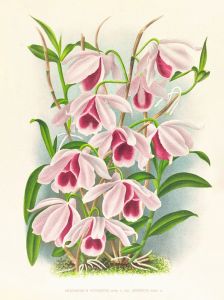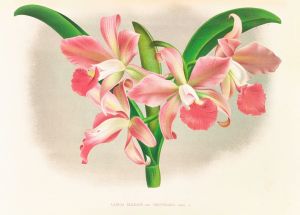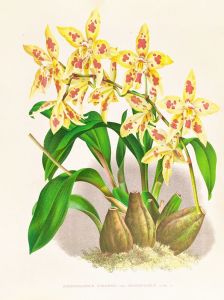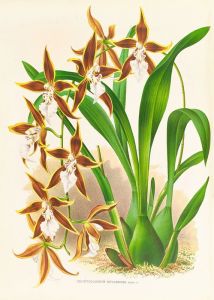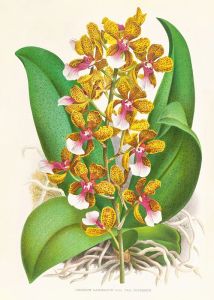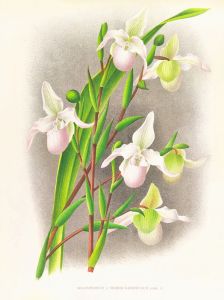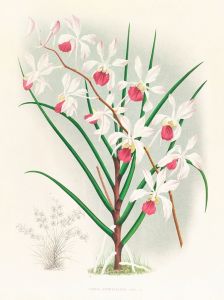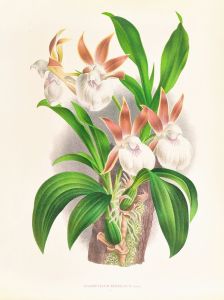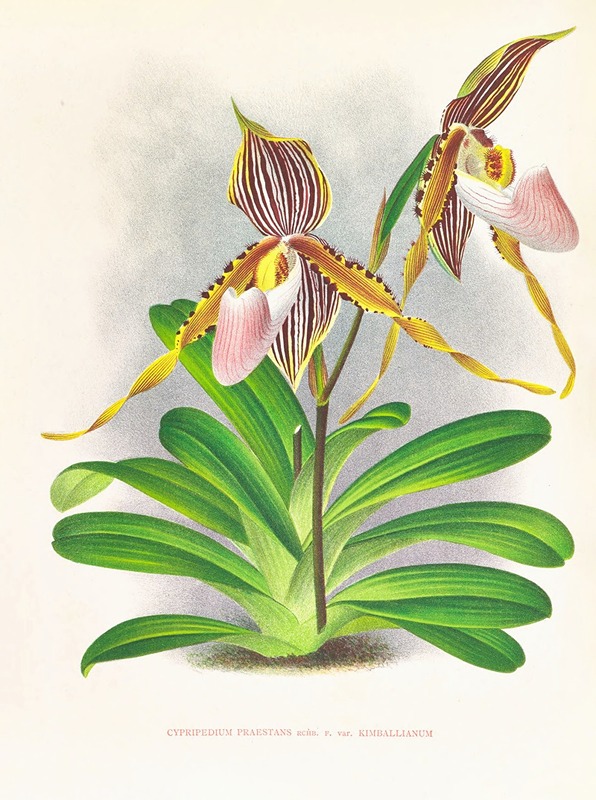
Cypripedium praestans var kimballianum
A hand-painted replica of Jean Jules Linden’s masterpiece Cypripedium praestans var kimballianum, meticulously crafted by professional artists to capture the true essence of the original. Each piece is created with museum-quality canvas and rare mineral pigments, carefully painted by experienced artists with delicate brushstrokes and rich, layered colors to perfectly recreate the texture of the original artwork. Unlike machine-printed reproductions, this hand-painted version brings the painting to life, infused with the artist’s emotions and skill in every stroke. Whether for personal collection or home decoration, it instantly elevates the artistic atmosphere of any space.
Cypripedium praestans var kimballianum is an illustration created by the renowned Belgian botanist and horticulturist Jean Jules Linden. Linden, born in 1817 and passing in 1898, was a significant figure in the 19th-century botanical world, particularly known for his work with orchids. His contributions to botany were not limited to his scientific endeavors; he was also a prolific illustrator, capturing the intricate beauty of the plants he studied.
The illustration of Cypripedium praestans var kimballianum is part of Linden's extensive body of work that focused on orchids, a family of flowering plants that fascinated many botanists and horticulturists of his time. Orchids were highly prized for their exotic appearance and the challenge they presented in cultivation, making them a subject of great interest and study.
Jean Jules Linden's illustrations are noted for their accuracy and attention to detail, qualities that were essential for scientific documentation before the advent of modern photography. His work often accompanied his publications, which included detailed descriptions of the plants he illustrated. These illustrations served not only as scientific records but also as educational tools for other botanists and horticulturists.
Cypripedium praestans var kimballianum belongs to the genus Cypripedium, commonly known as lady's slipper orchids due to the distinctive shape of their flowers, which resemble a slipper. This particular variety, like others in the genus, is characterized by its unique floral structure, which includes a pouch-like labellum. The detailed illustration by Linden would have captured these features with precision, aiding in the identification and study of the species.
Linden's work was part of a broader movement in the 19th century that saw a surge in botanical exploration and documentation. This period was marked by the collection and classification of plants from around the world, driven by the expansion of European empires and the corresponding interest in natural history. Botanists like Linden played a crucial role in this endeavor, traveling to distant lands, collecting specimens, and documenting their findings through both written descriptions and illustrations.
The illustration of Cypripedium praestans var kimballianum by Jean Jules Linden is a testament to the meticulous work of 19th-century botanists and the importance of botanical illustration in the scientific study of plants. Linden's contributions have left a lasting legacy in the field of botany, providing valuable insights into the diversity and beauty of the plant kingdom.
In summary, Jean Jules Linden's illustration of Cypripedium praestans var kimballianum is a notable example of 19th-century botanical art, reflecting the scientific rigor and artistic skill of its creator. It remains a valuable piece of botanical history, illustrating the intricate details of a fascinating orchid species.






